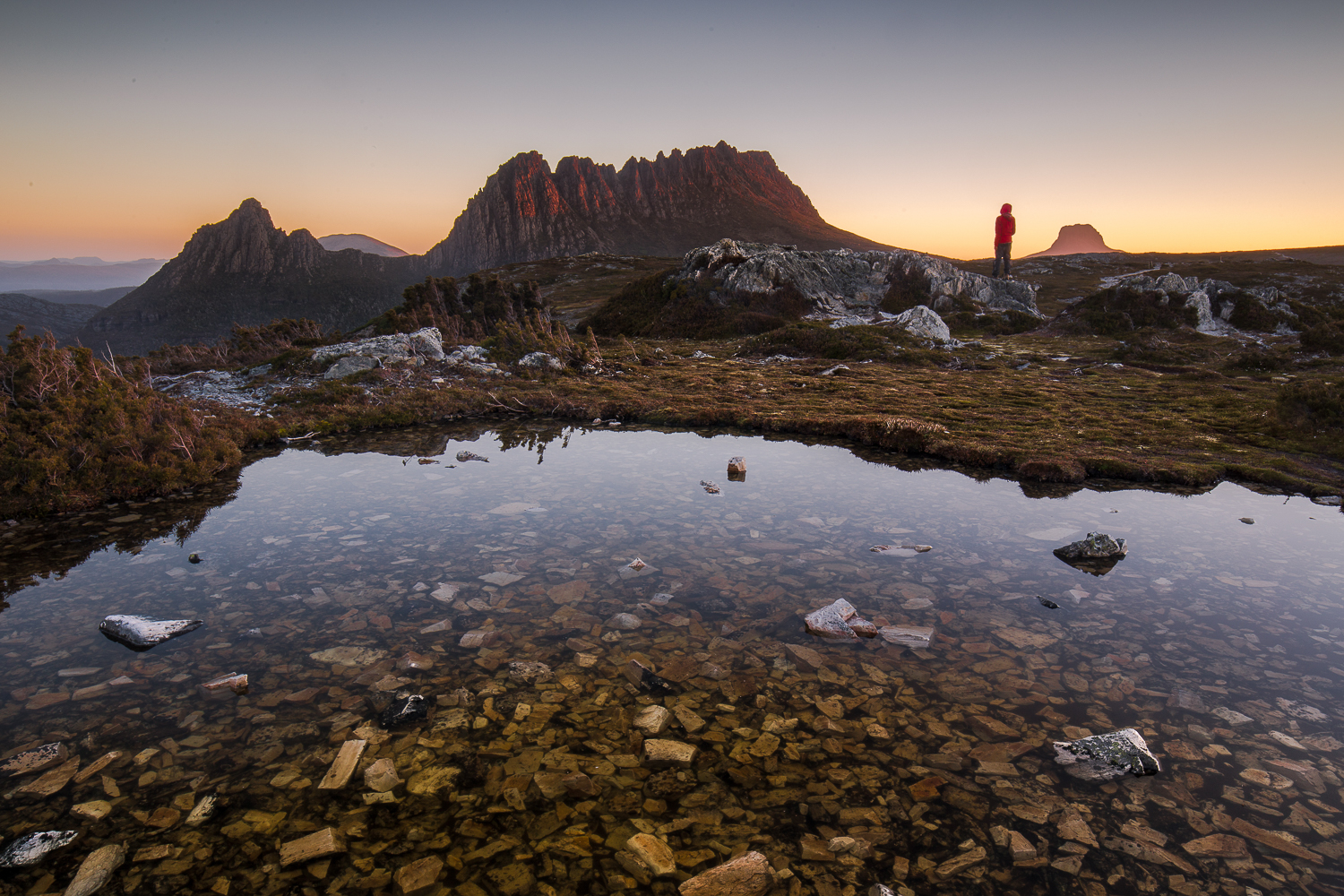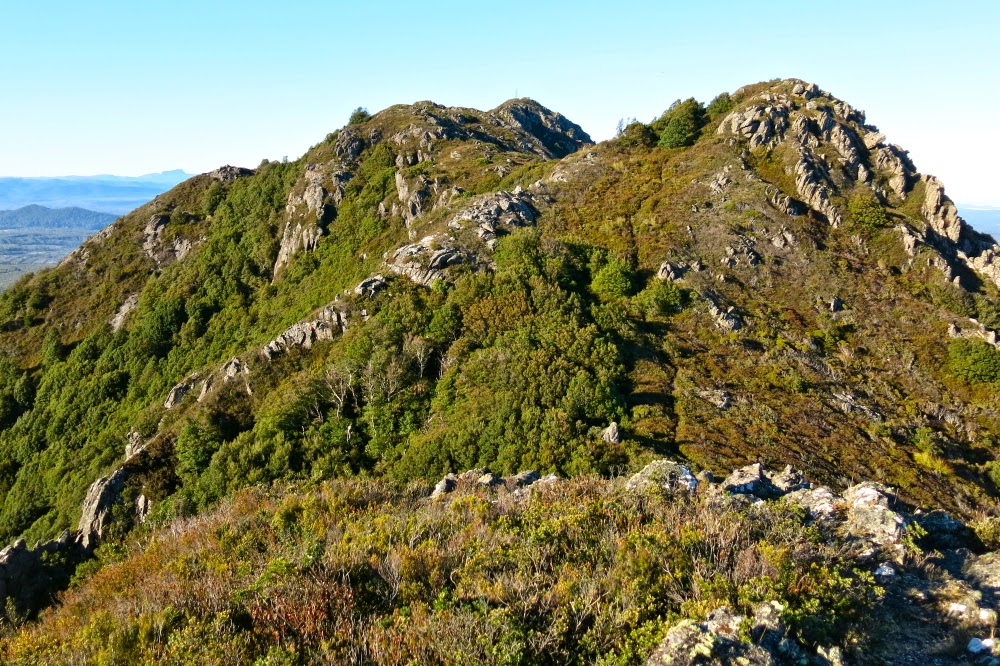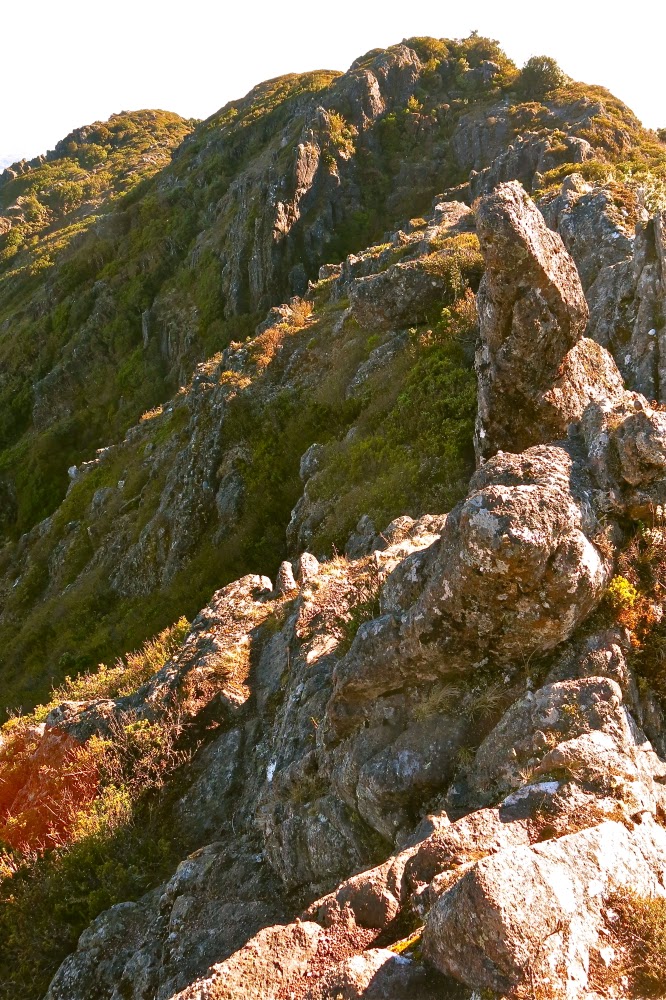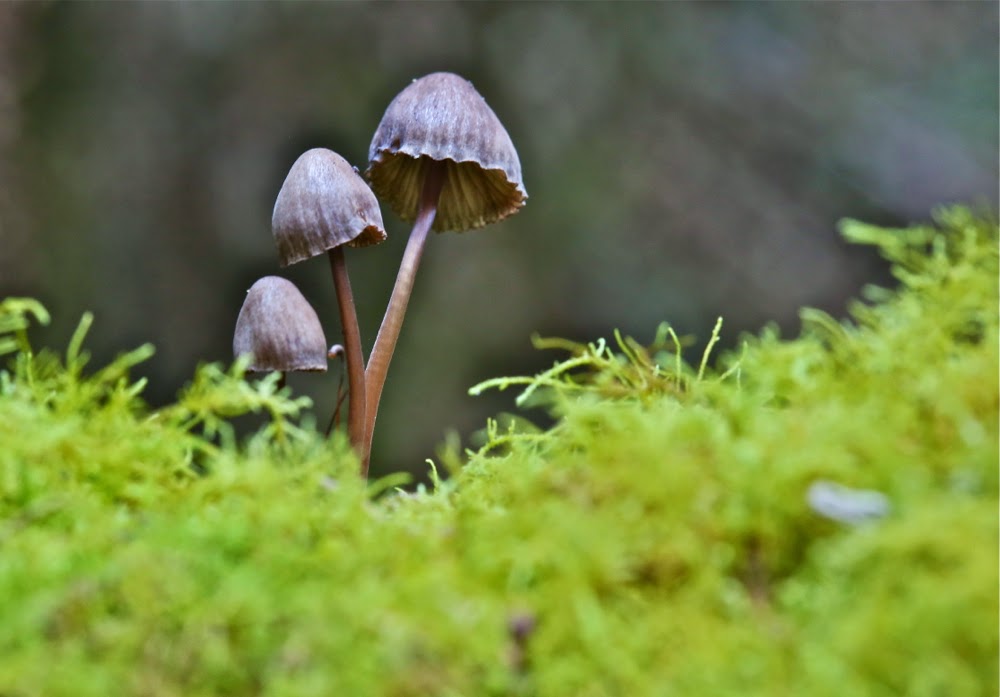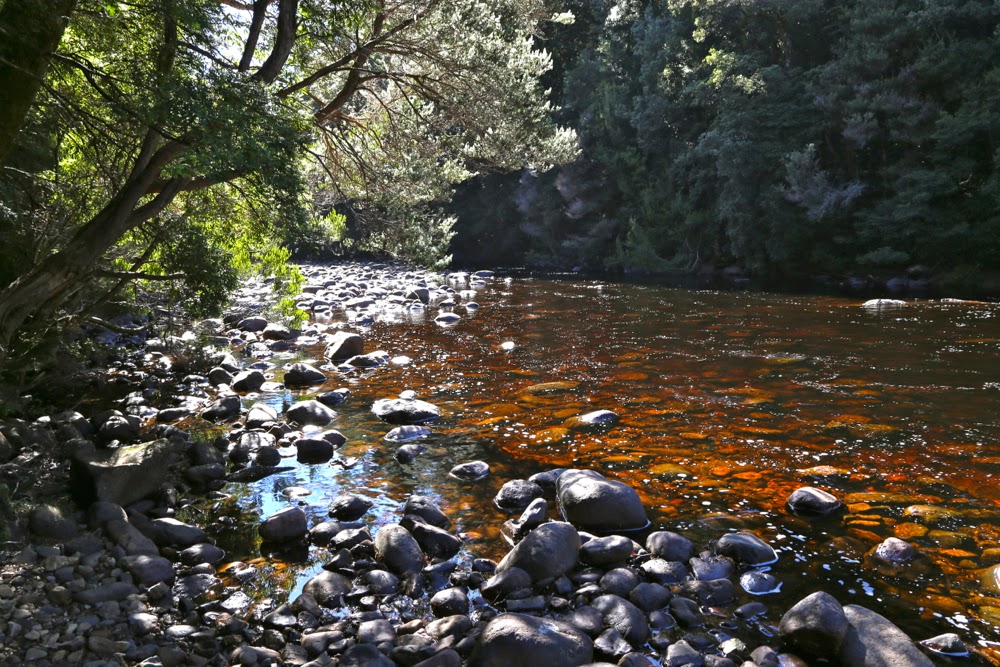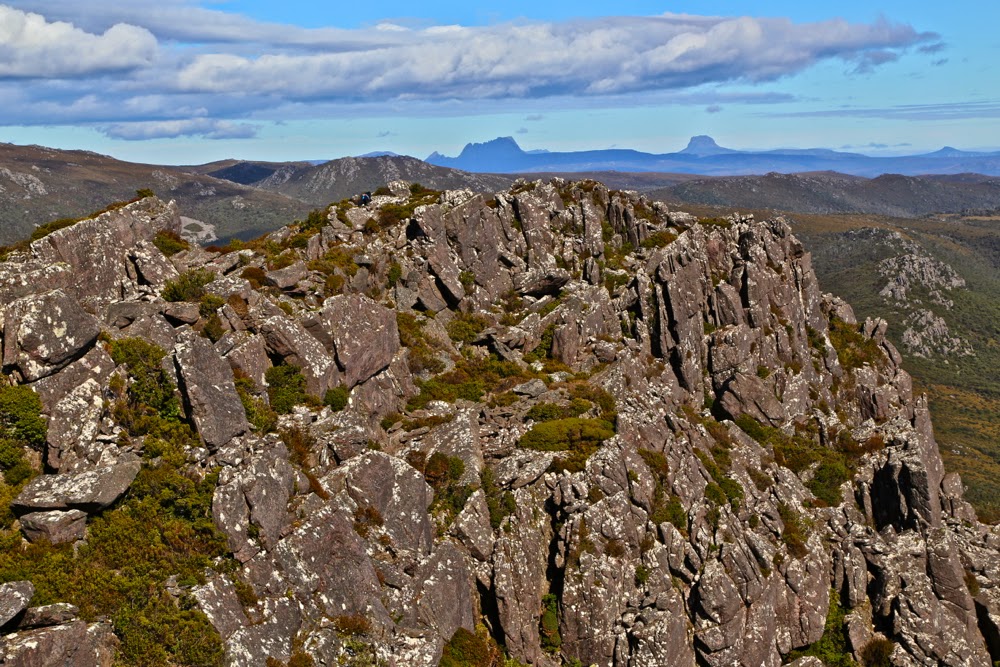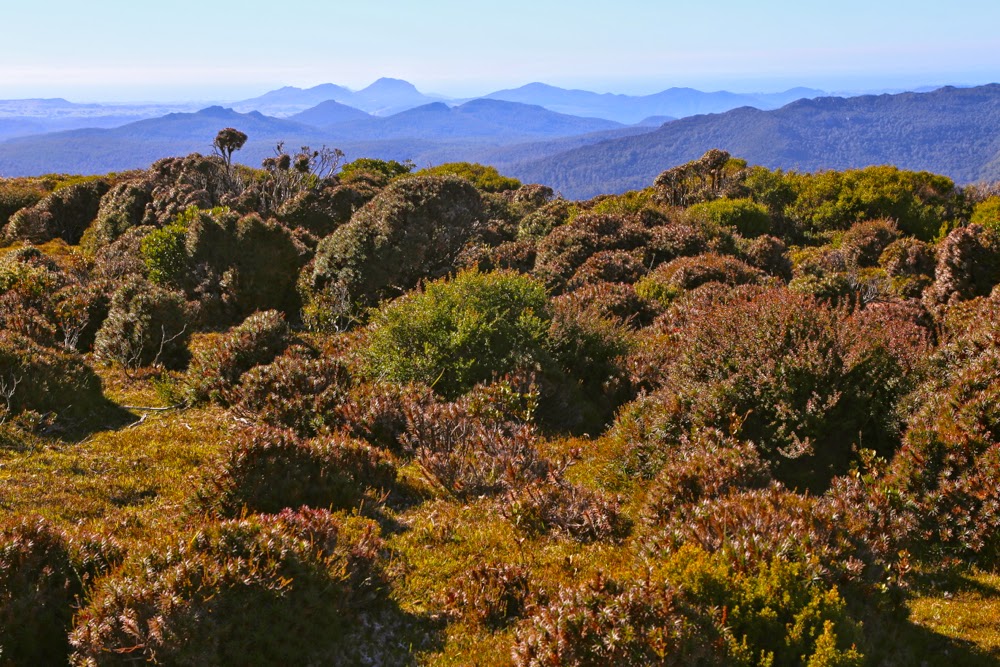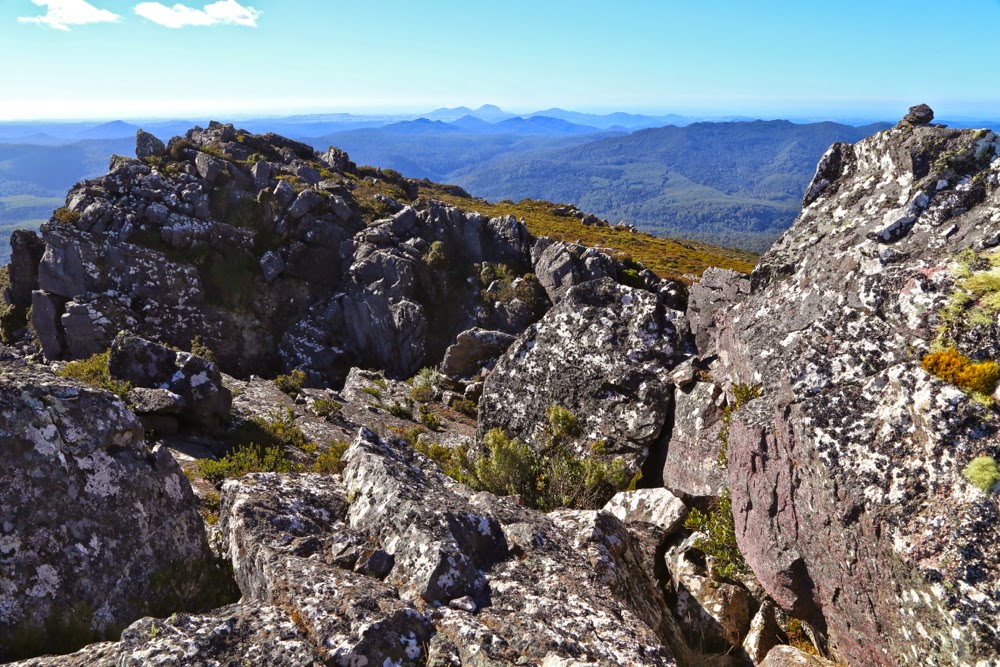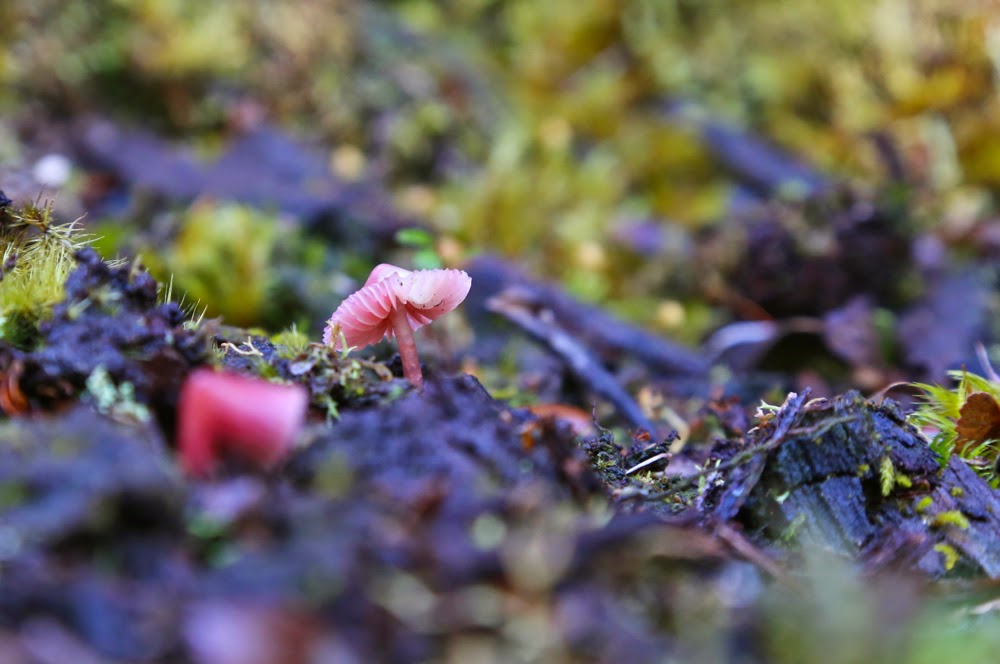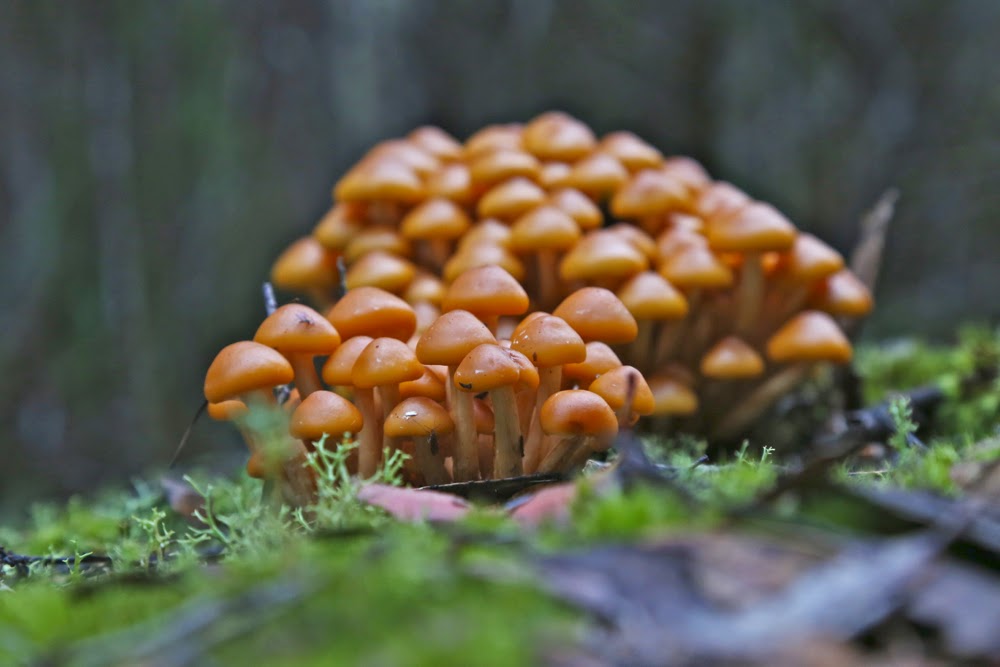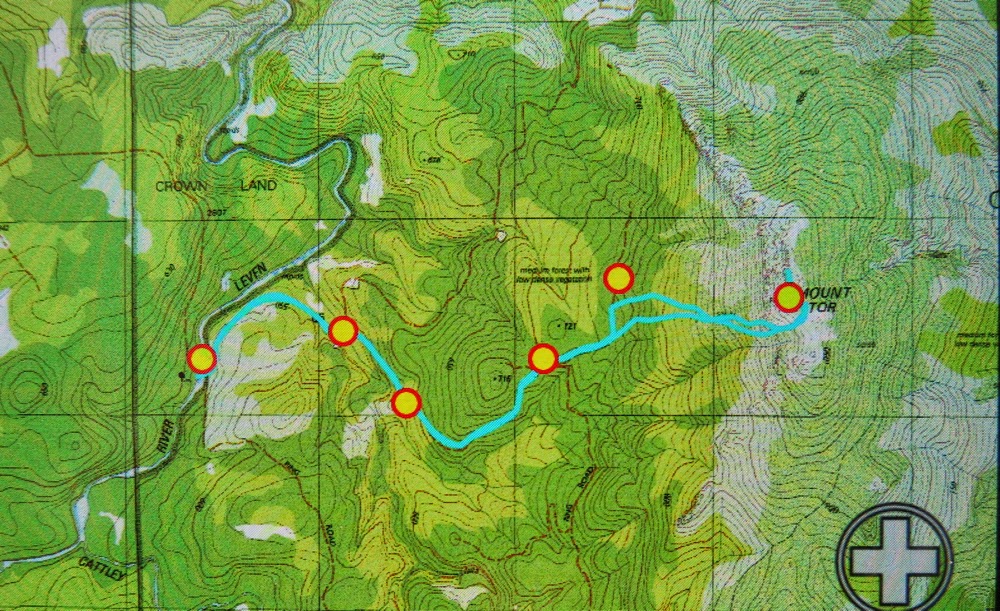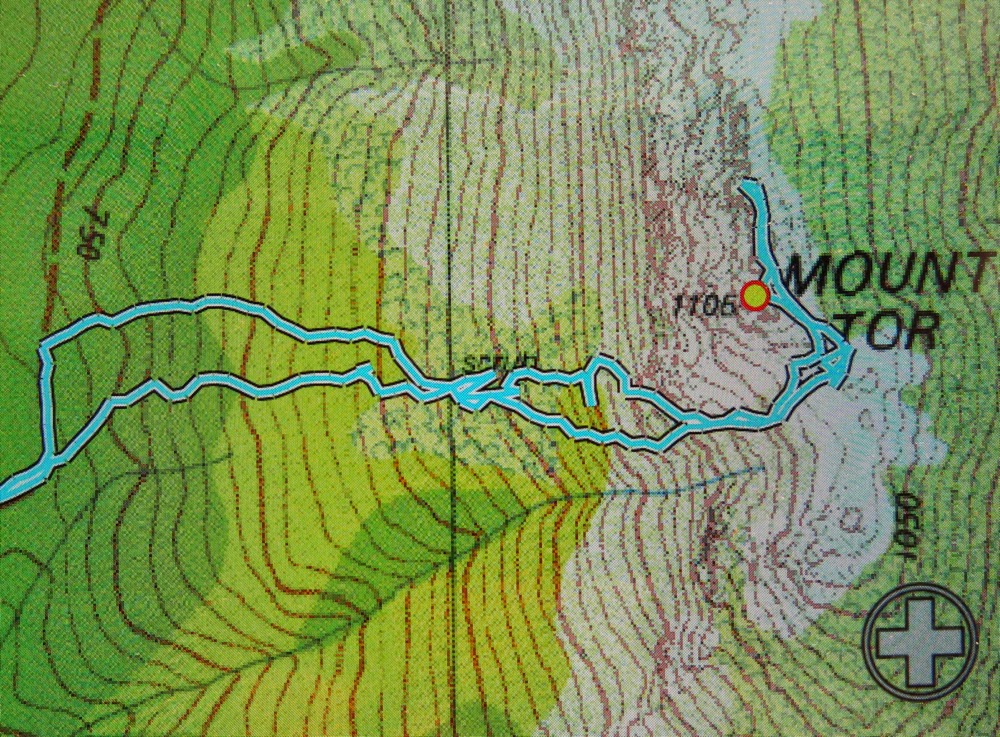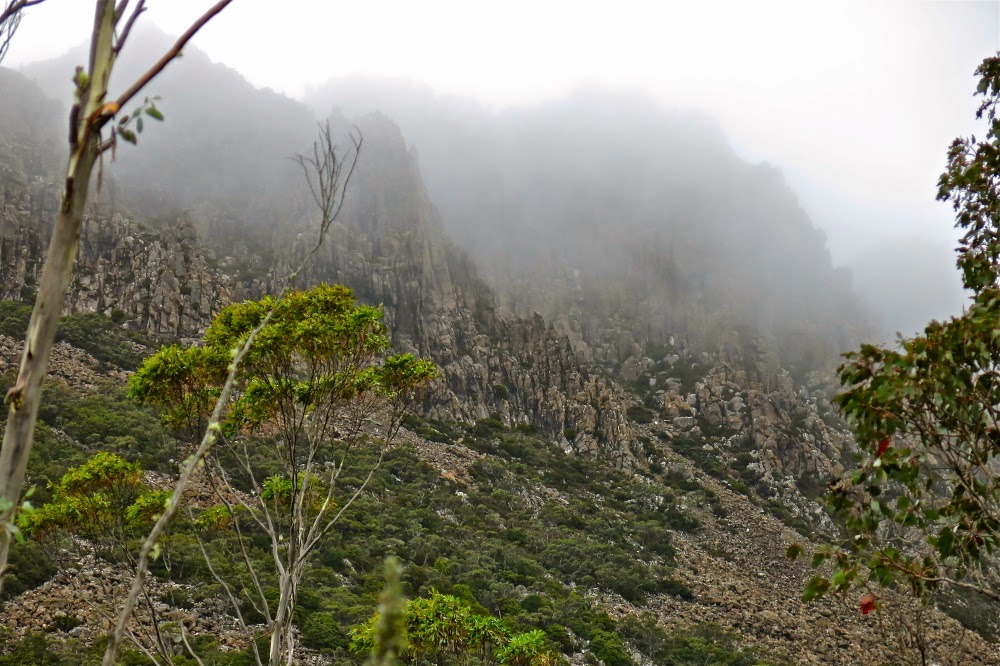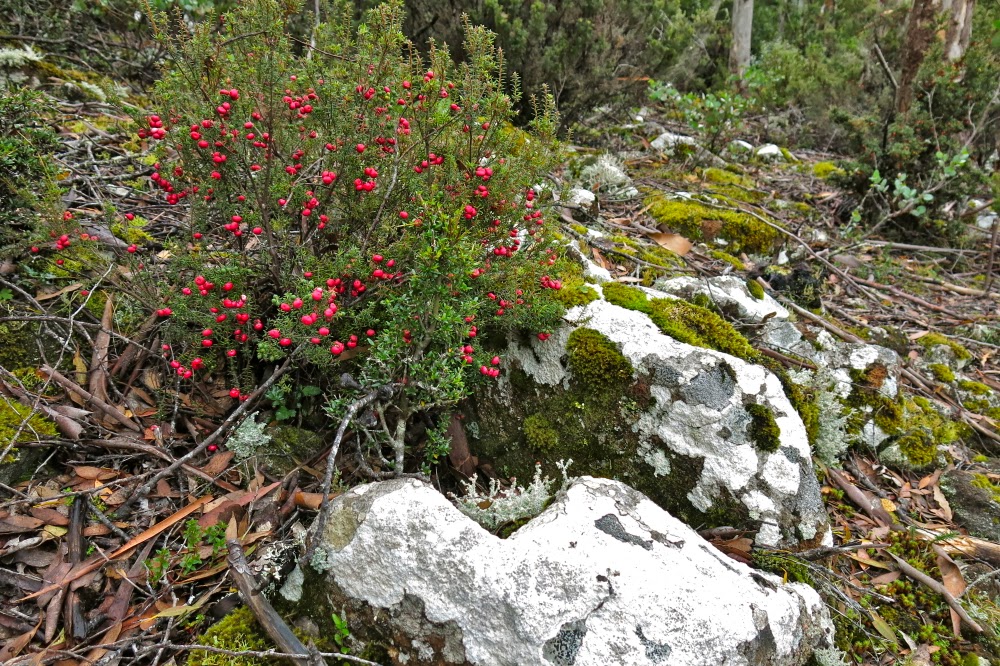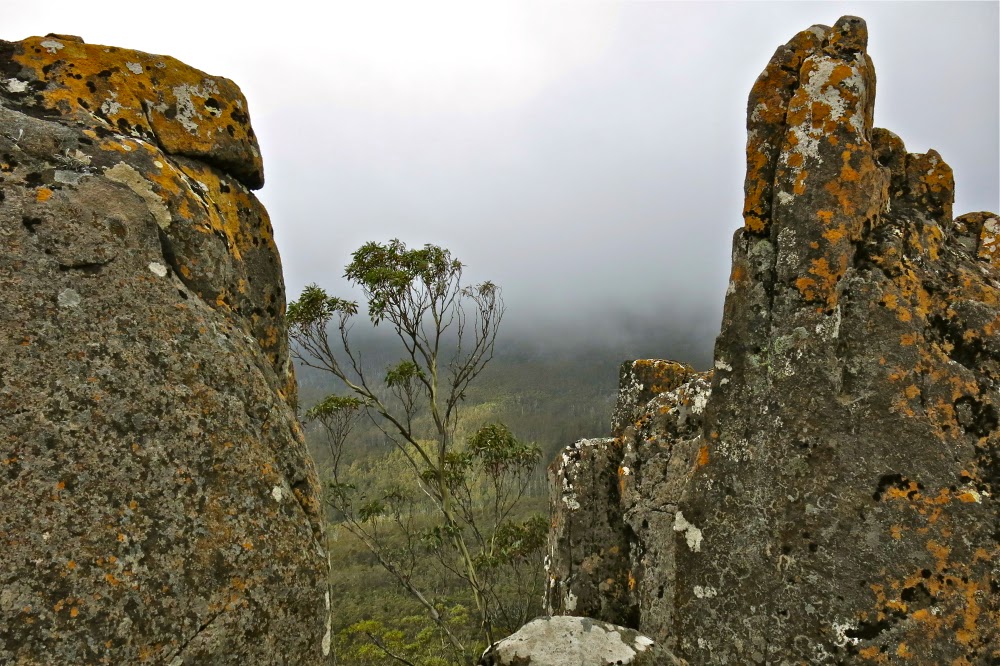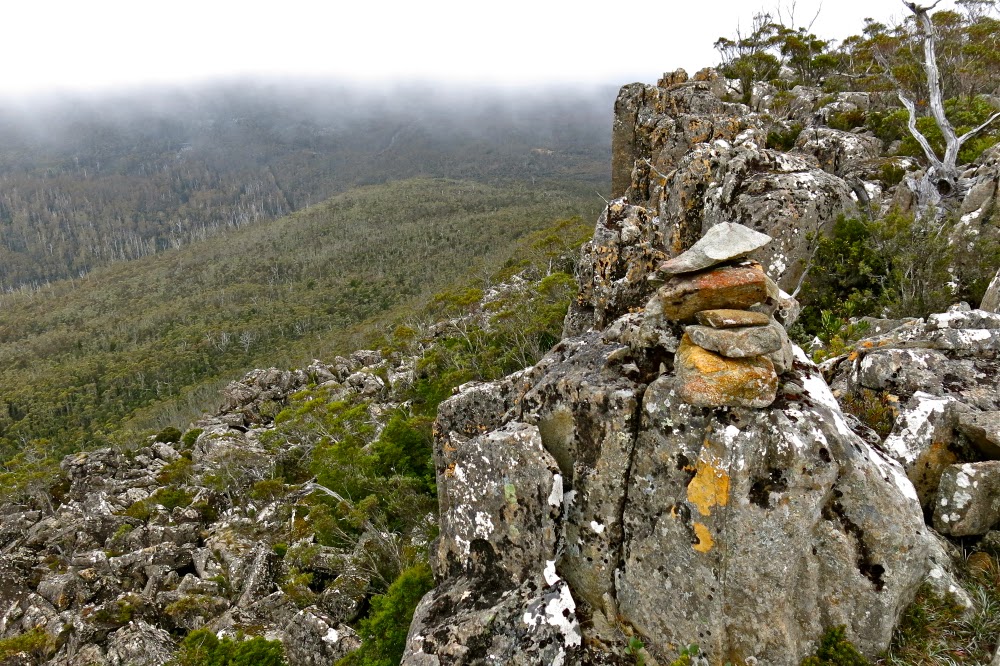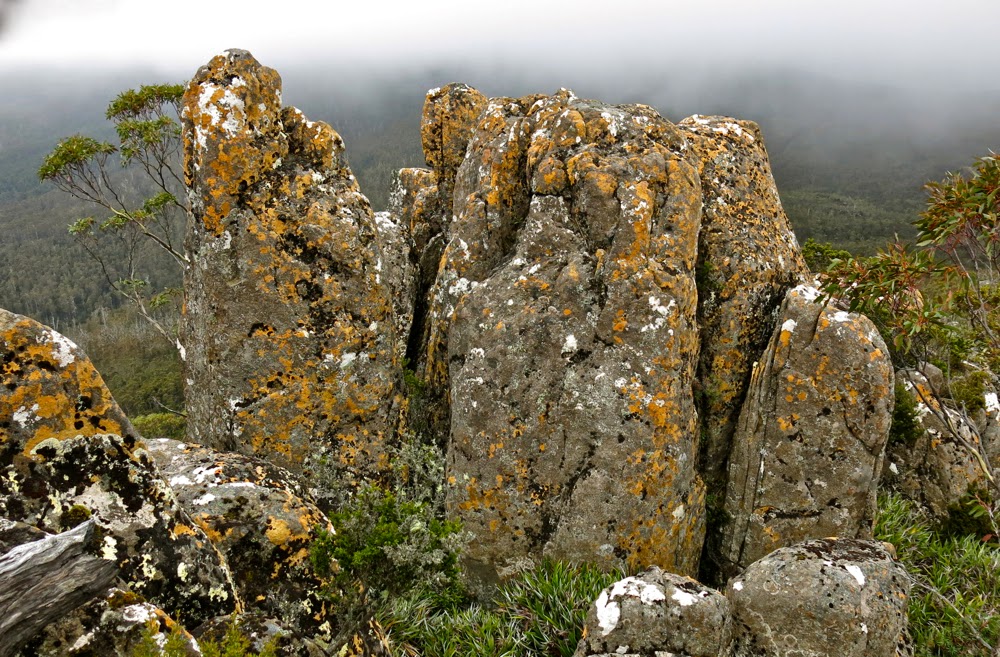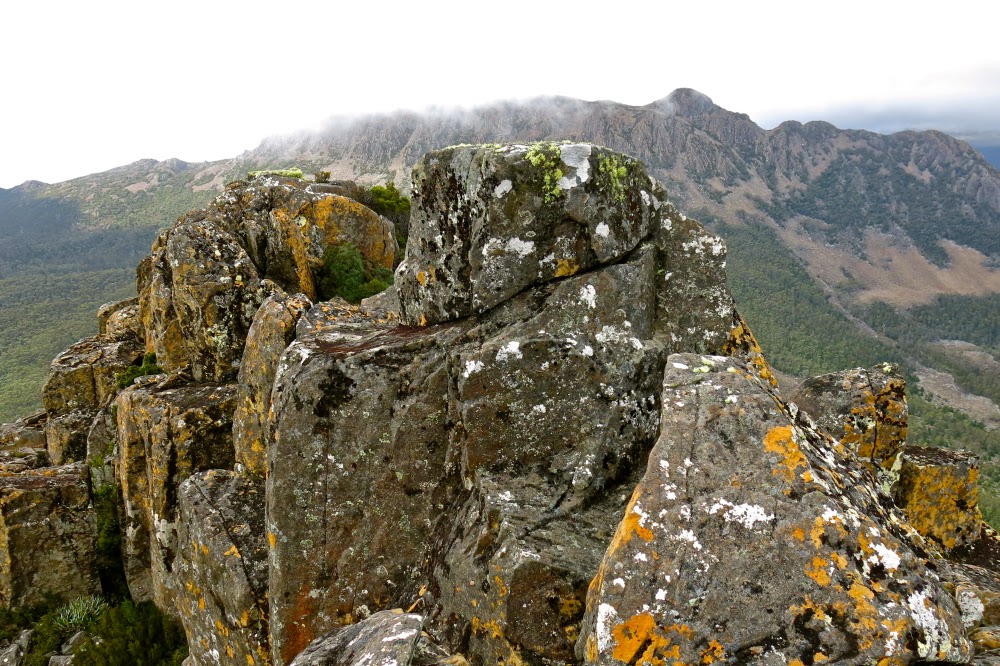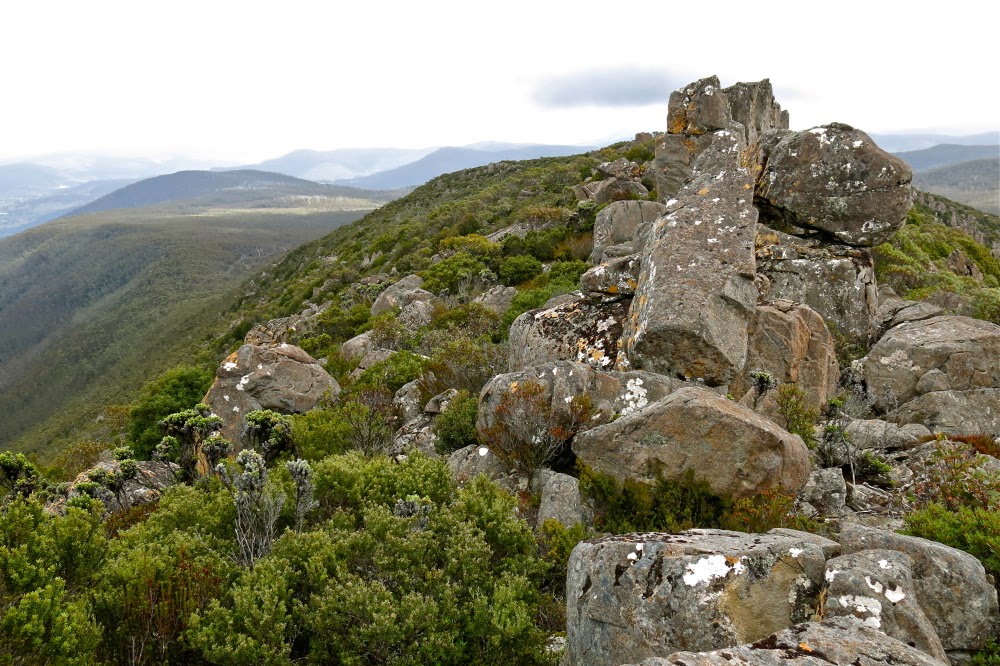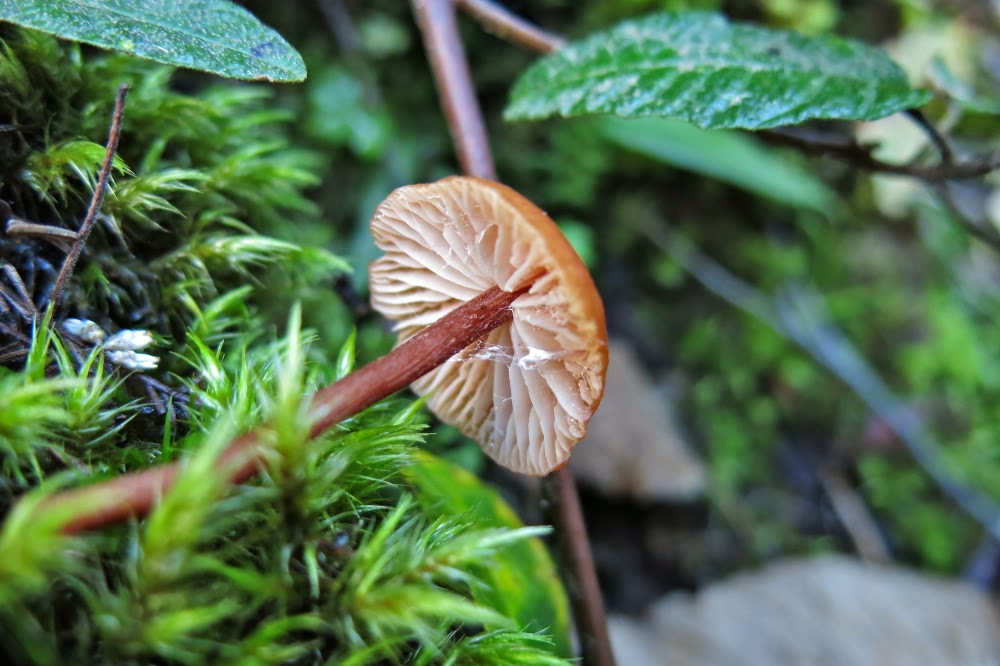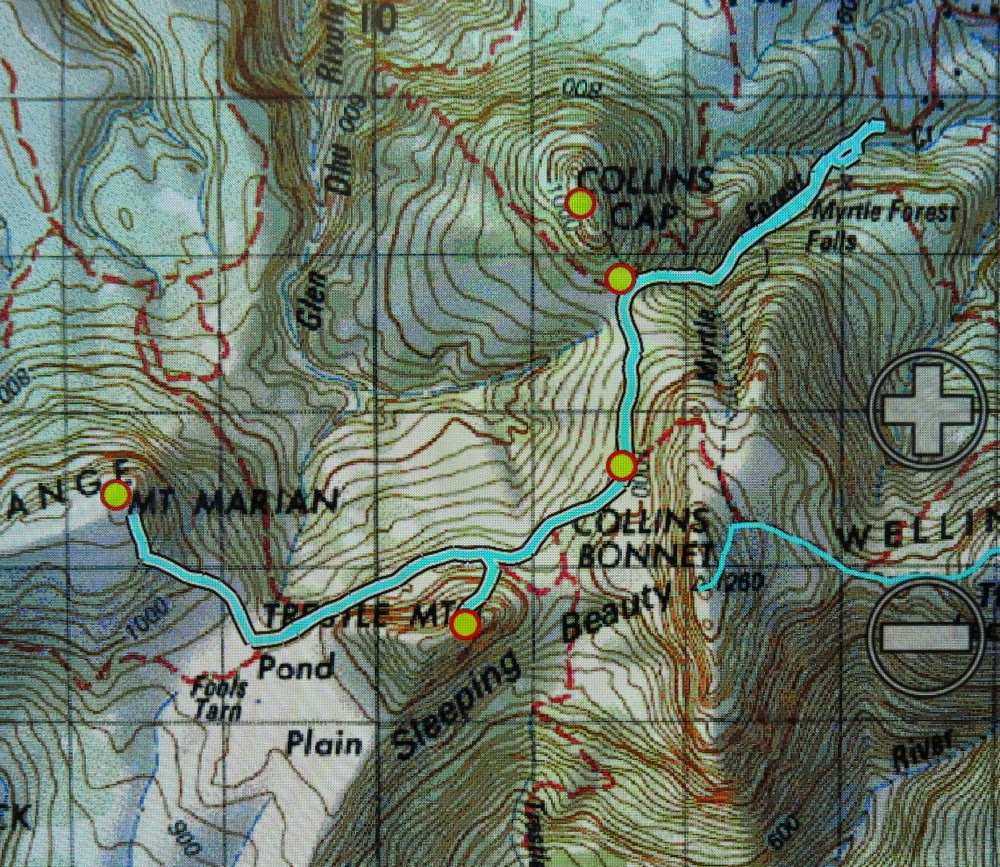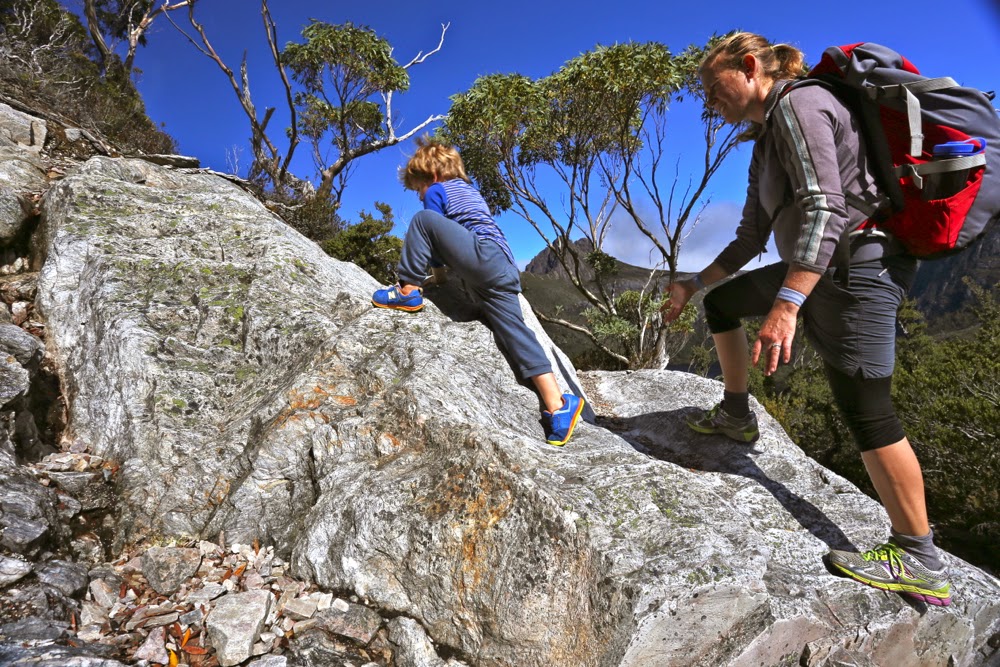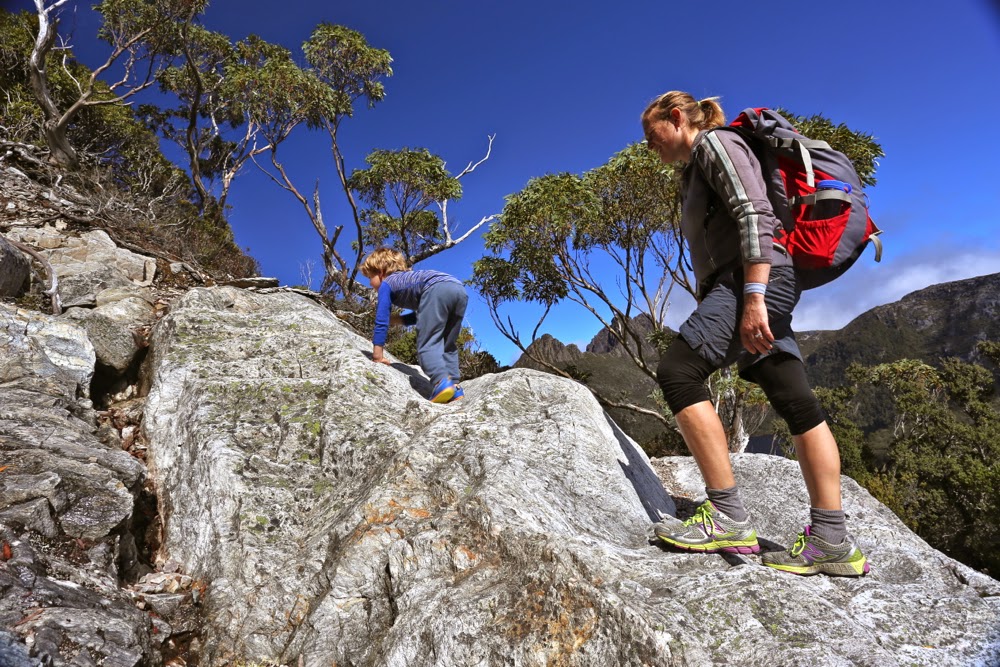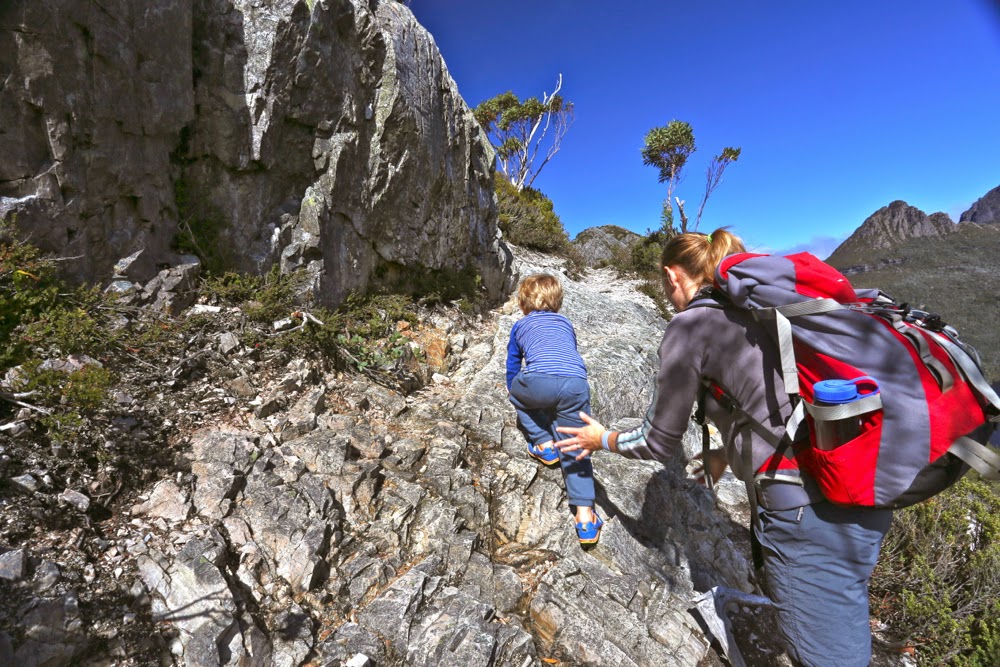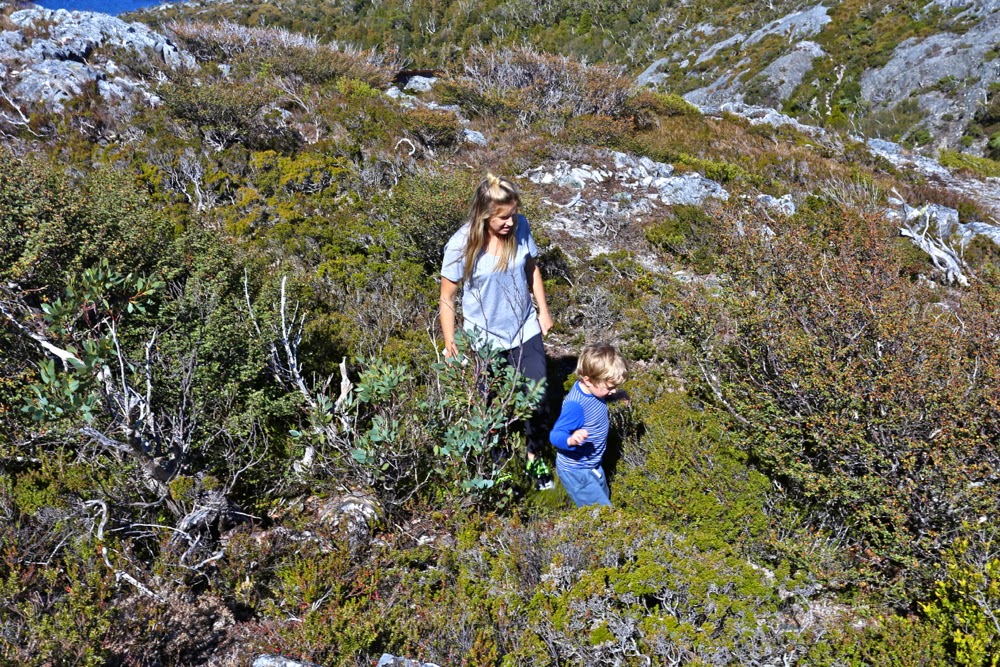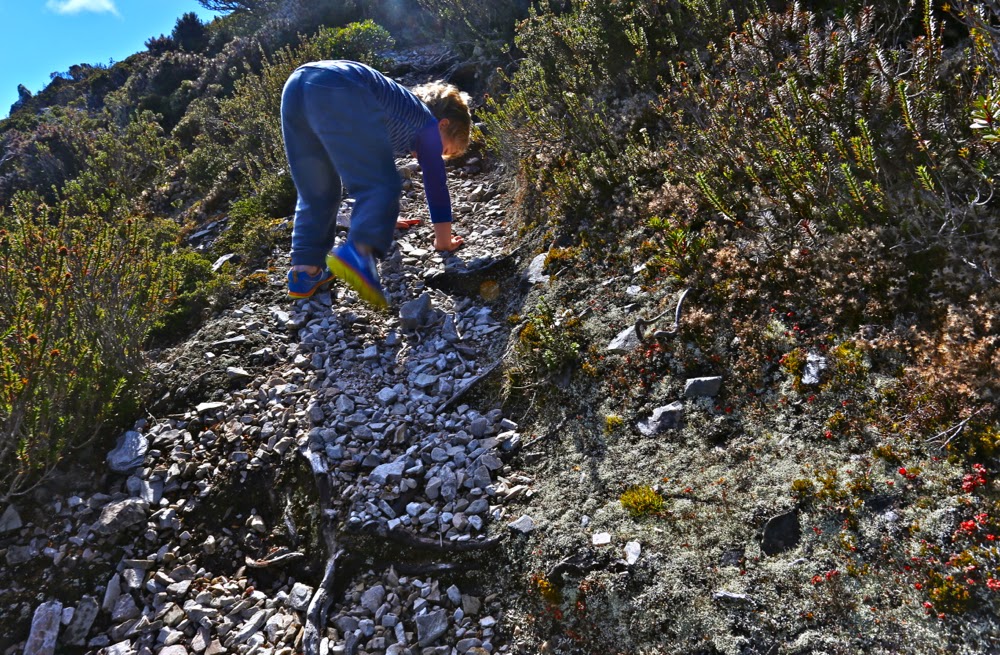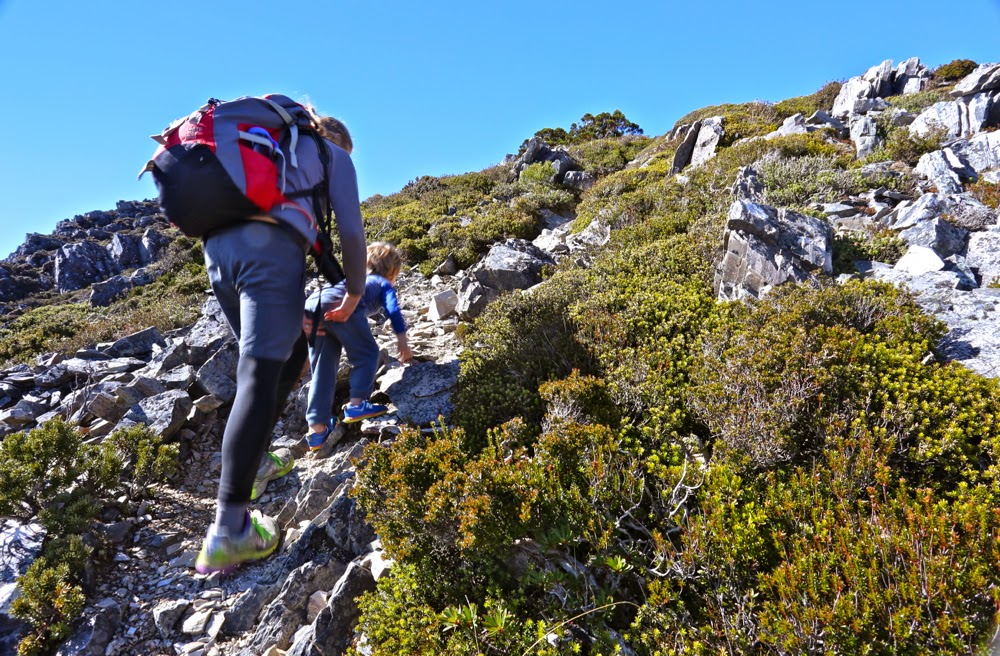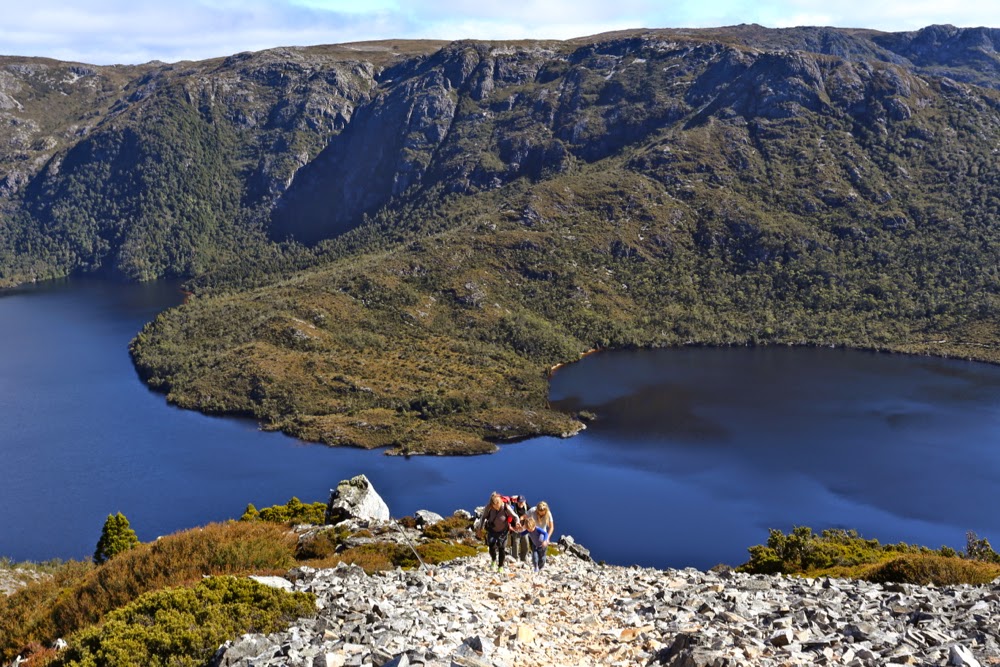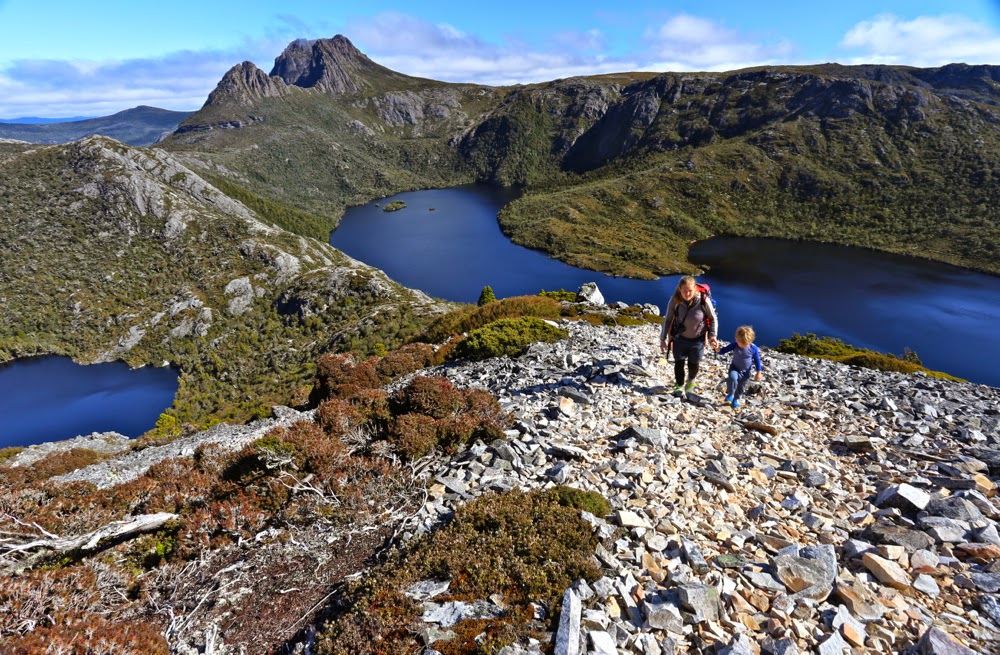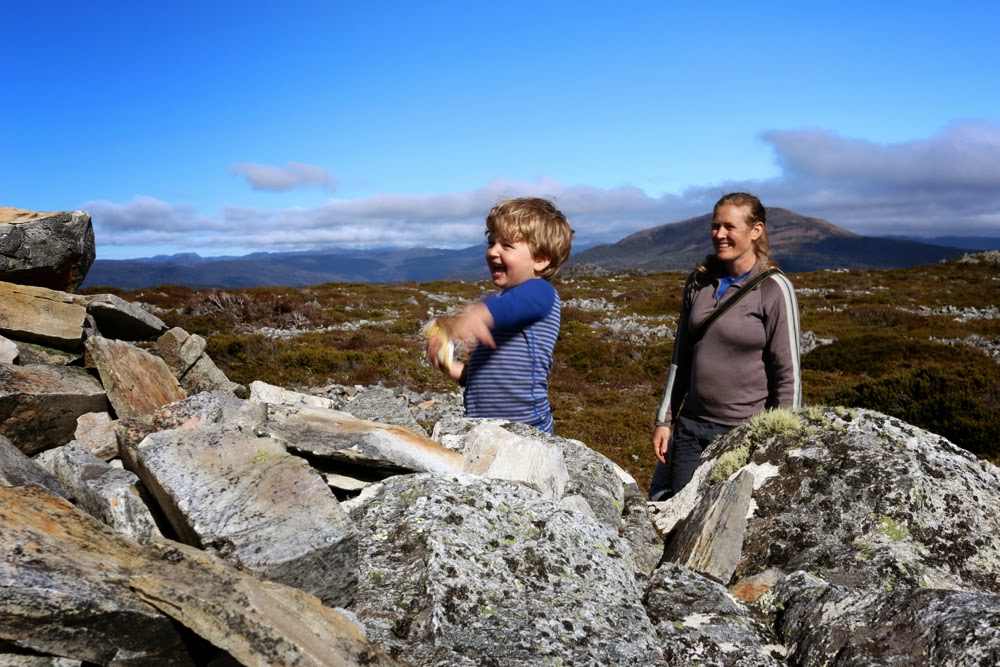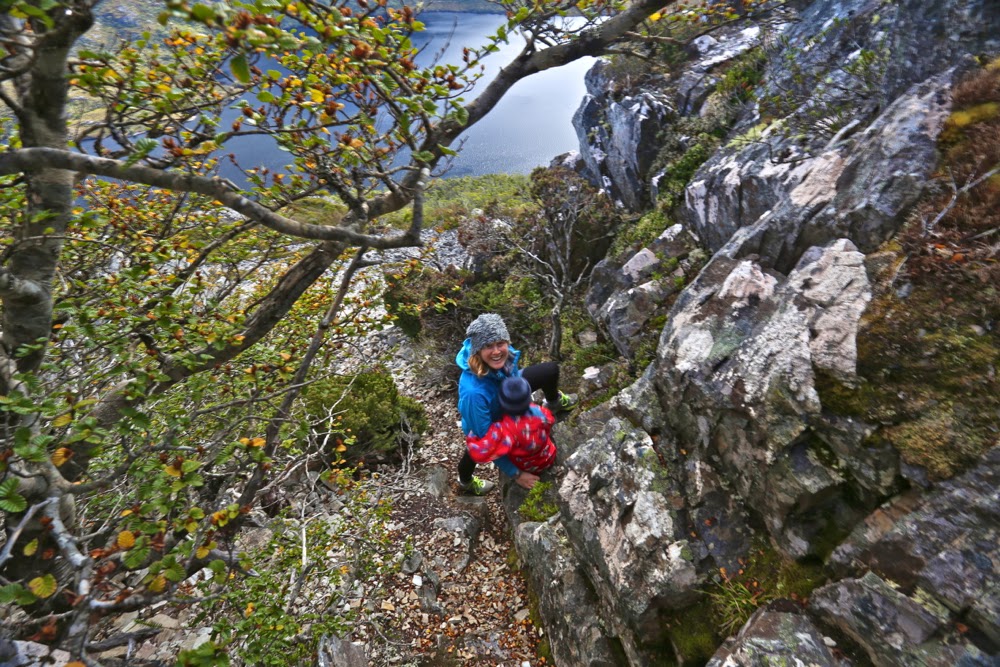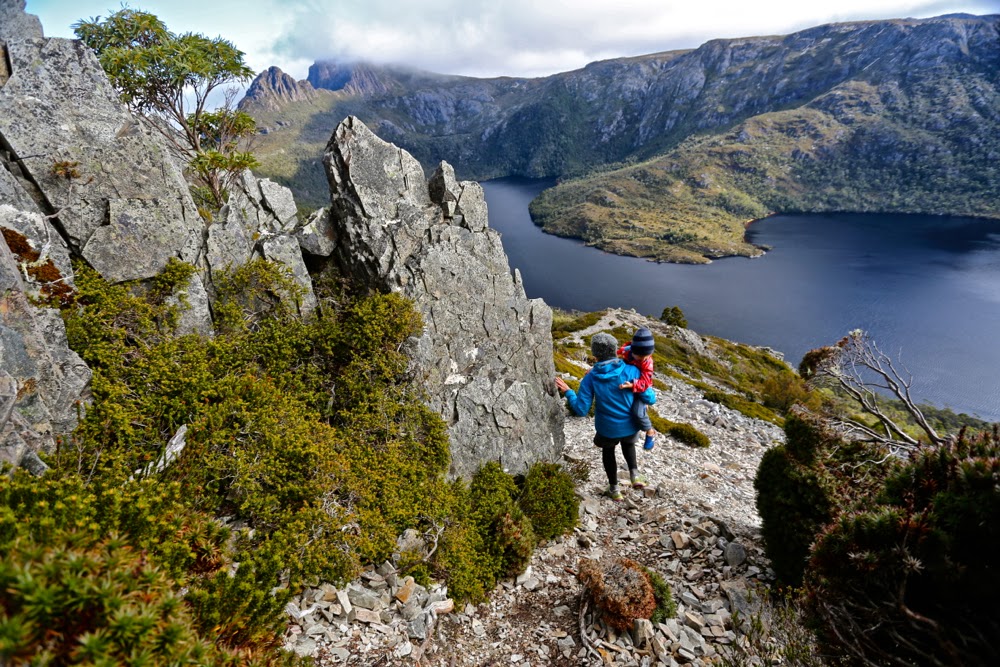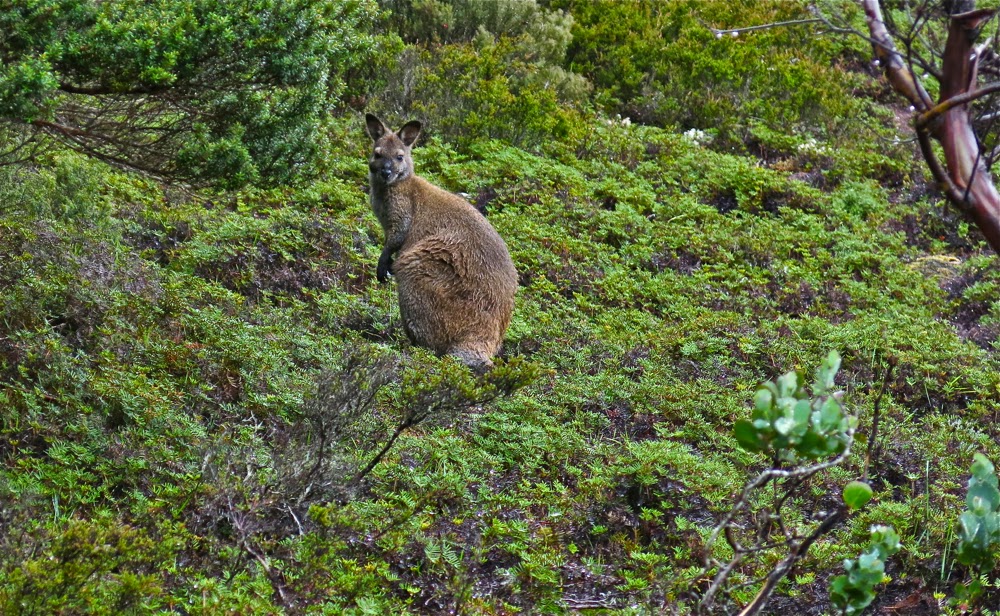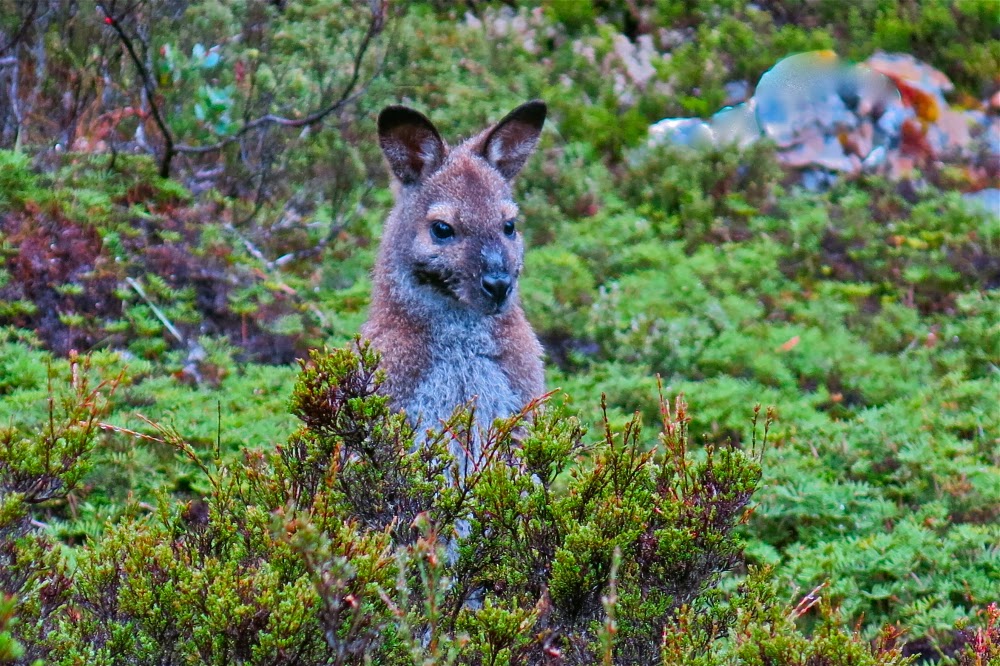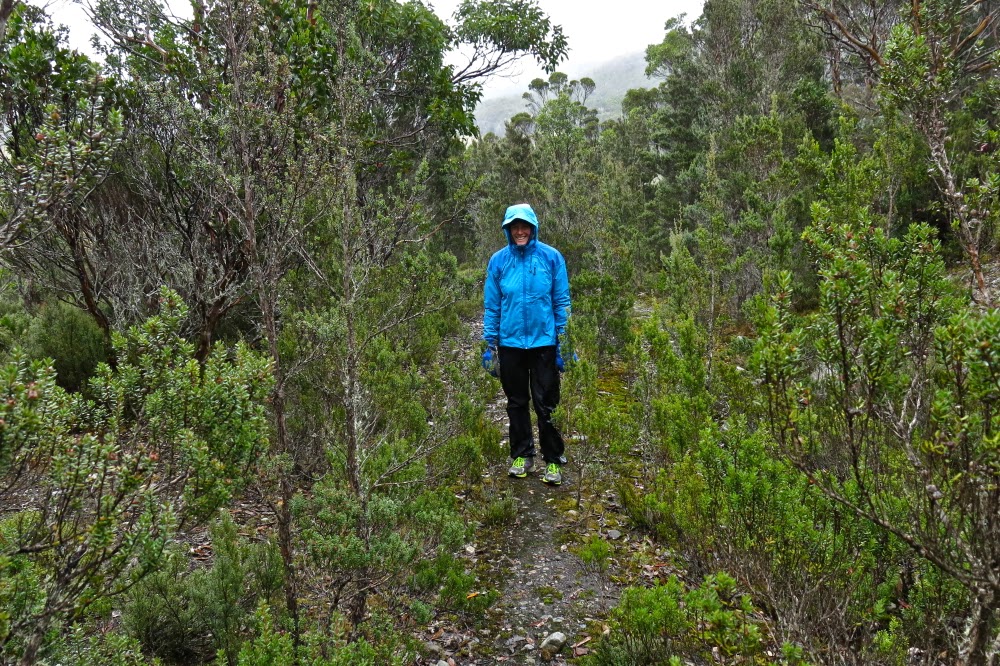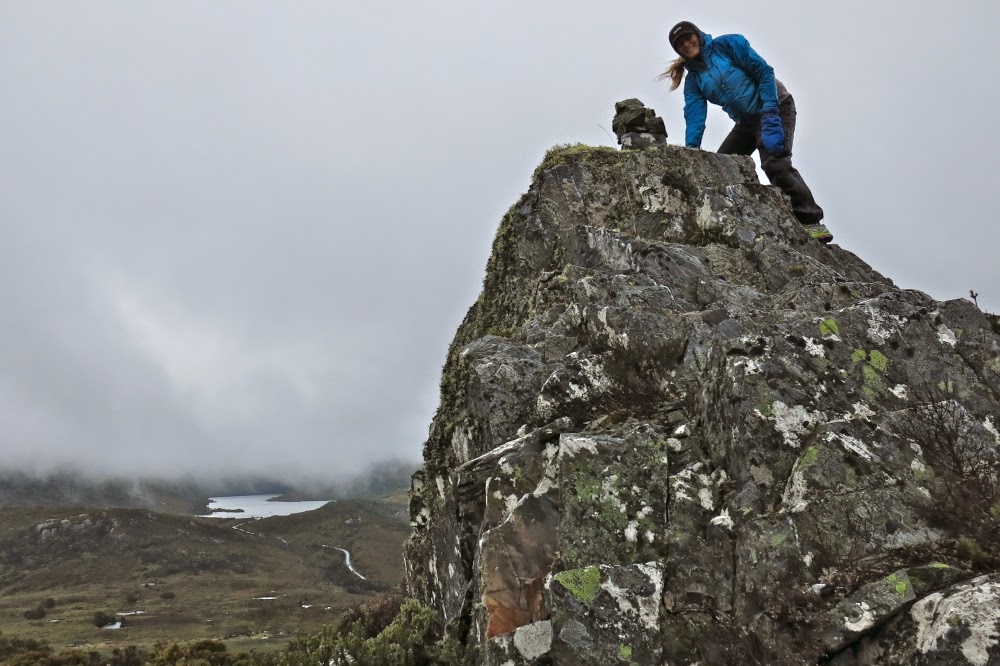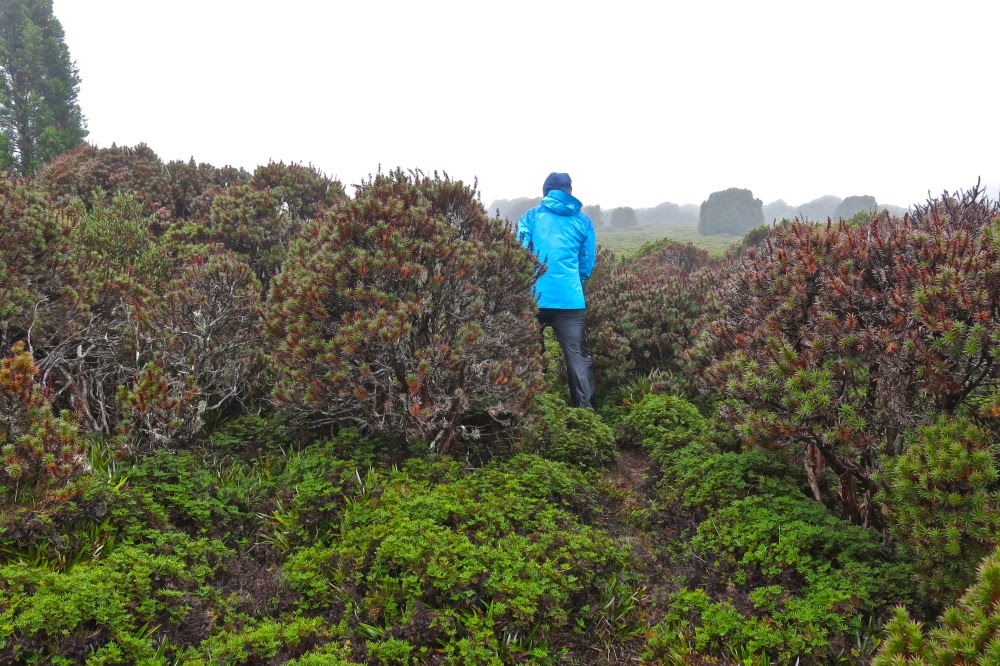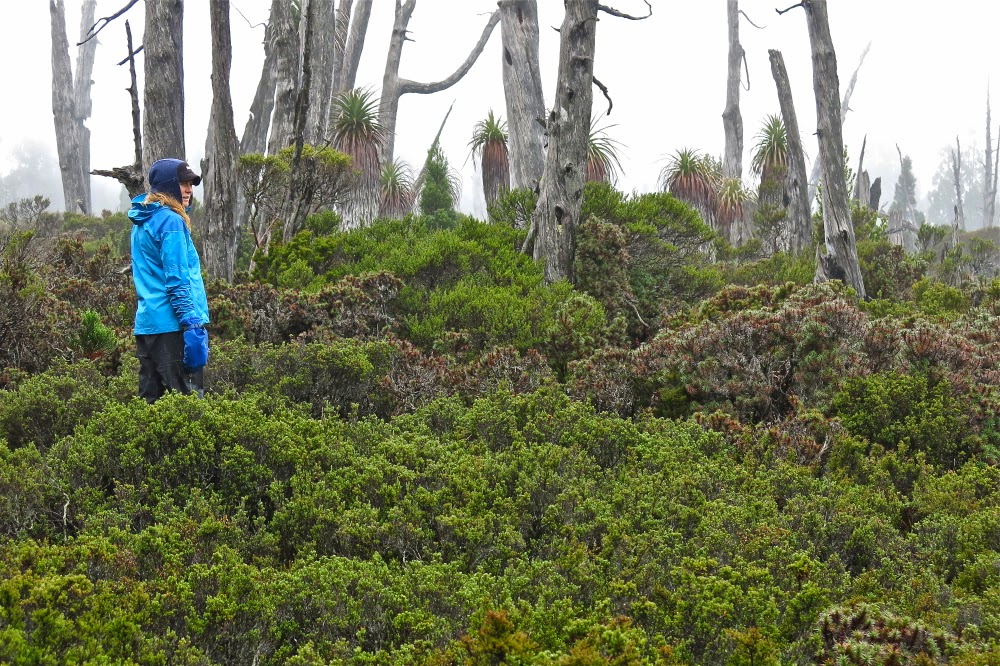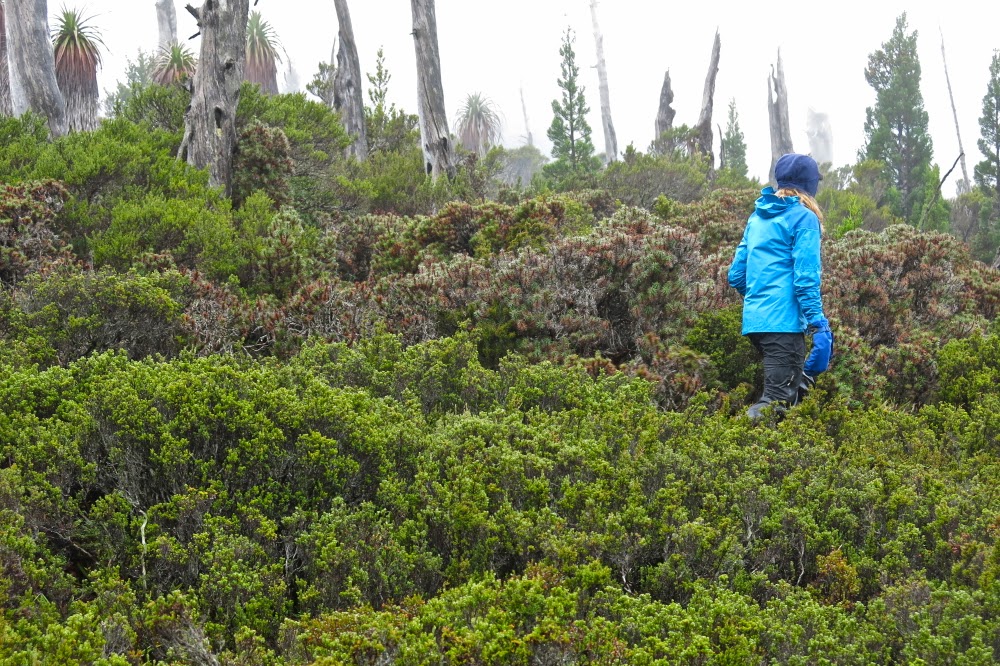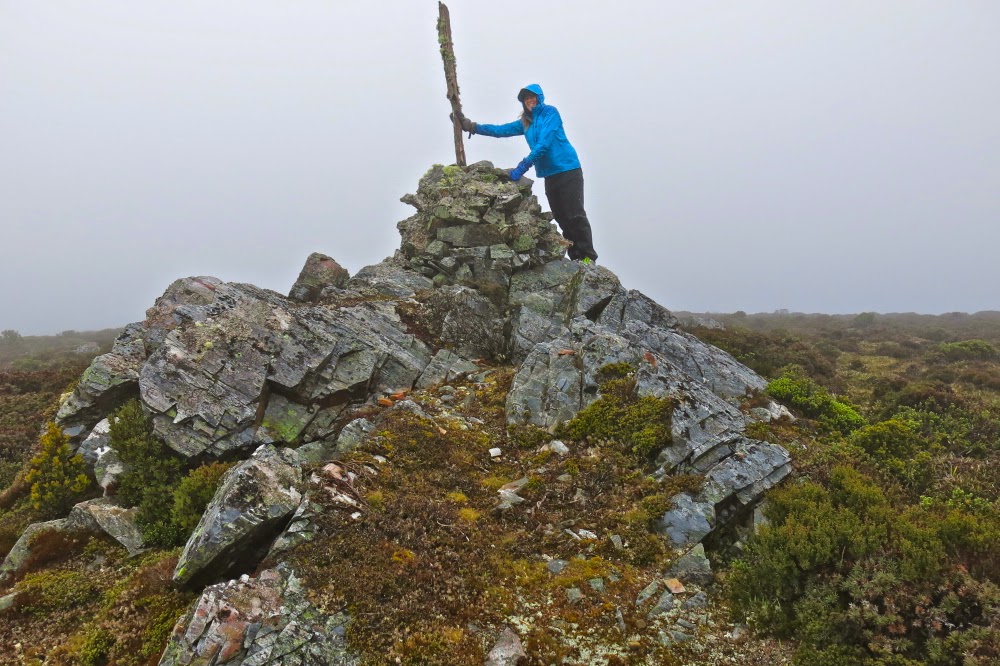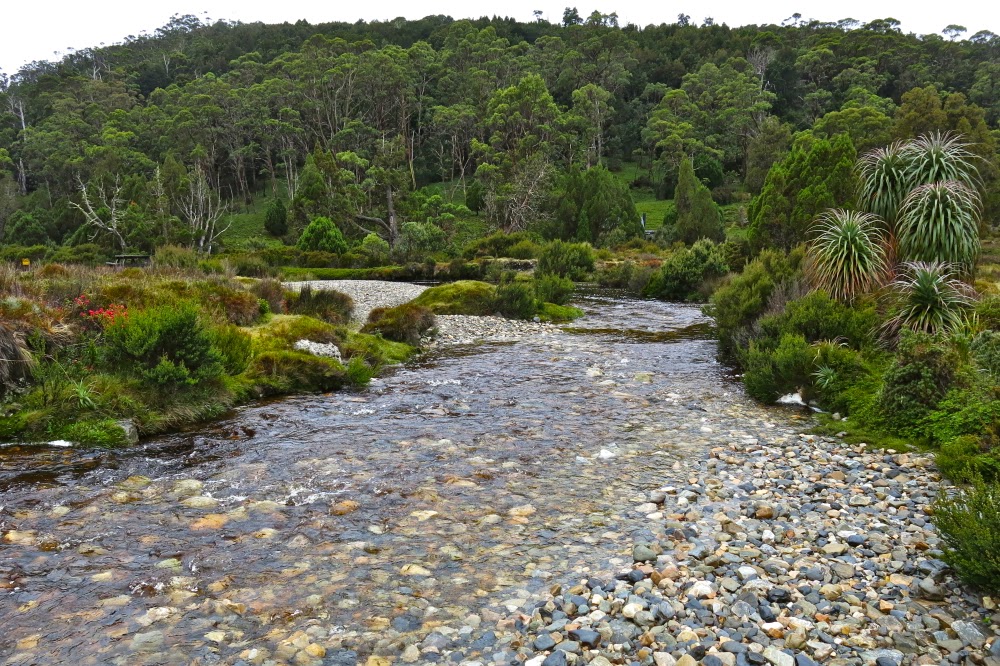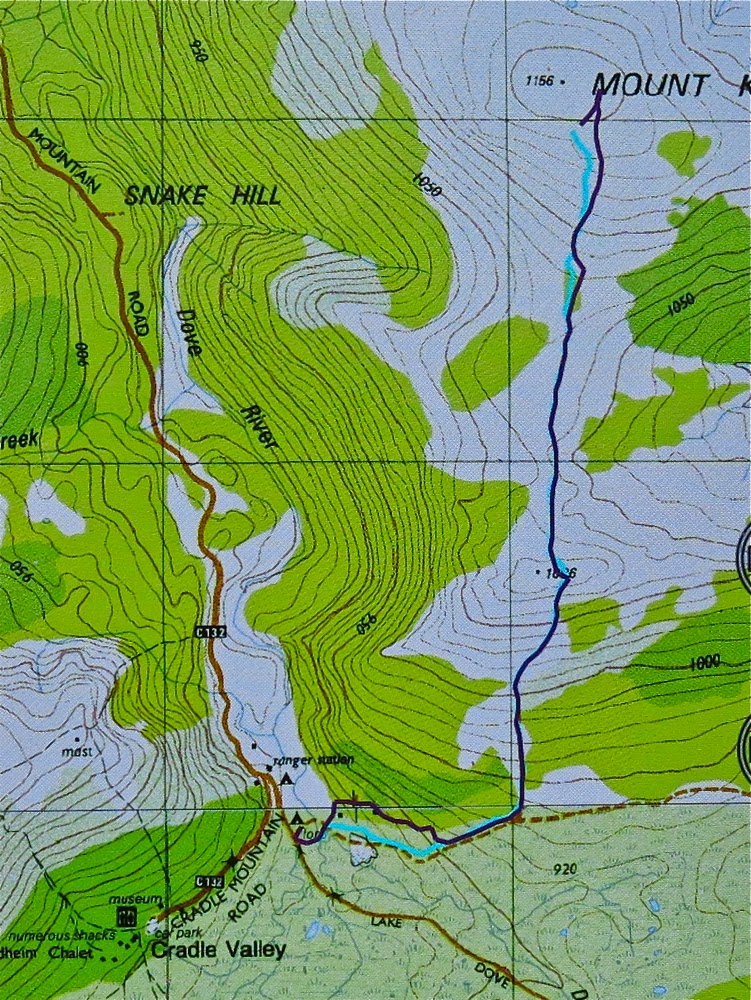Mt Marian and Trestle Mountain April 2015.
I rather liked this view of Collins Bonnet that presented itself to me as I passed by – an old friend.
People climb mountains for many reasons. Some climbers, when asked why they did it, merely respond: “Because it was there”, which is not altogether helpful. Perhaps if I may attempt to articulate the unarticulated, I think they probably mean that the very presence of the mountain issues a challenge that they just couldn’t resist. Possibly at the other extreme are people who maintain that they only ever go up a mountain to have “a lovely day out” and that they don’t care which mountain it is, or whether or not they reach the summit. My first born daughter used to refuse to stop climbing anything until she had reached the top – and that was when she was still in nappies. I decided watching her that a drive to the summit was a genetic thing, as I had never taught her to behave like that.
Leptecophylla juniperina adds colour, especially when doing combat with the white snowberries of Gaultheria hispida
I like to think I have a huge mixture of reasons for climbing, and that different ones may dominate on different days. Sure, on some days, like yesterday, I can be happy just to be there on the mountain, enjoying things from on high. On other days, I slip back into athlete mode, and am very business-like about getting to the top. Today was such a day. I had decided that I wanted to summit Mt Marian and Trestle Mountain (both Abels), and that I wanted it to be more of a workout than a pleasure jaunt (except that, for me, workouts are highly pleasurable). That’s probably because (i) I don’t like fire trails and (ii) I am feeling guilty that the dogs haven’t had enough of my company of late, so was in a rush to get home. This was to be a no fuss trip, and as fast as possible.
I set out after breakfast, and was ready to roll at Myrtle Forest Picnic area by 10. (For those from the north and foreign visitors, if you head for Collinsvale, there is very clear signposting after that.)
Exciting vistas opened up as I neared the summit of Mt Marian
The first part of the track was glorious, beside a ferny creek with, hardly surprisingly, myrtles here and there. However, my eyes were decidedly groundwards, as there were many colourful fungi popping their cute umbrella heads out from wood and moss, and I was enjoying them. All too soon the track split, and my route, the right hand one, turned away from the creek and the forest became drier until, 35 minutes after leaving the car, I bumped rather unexpectedly into the Collins Cap track start. However, this was like the sirens tempting Odysseus. My goal was Mt Marian, not this one, and I would not be turned off my course. On I marched, happy with the unexpectedly short time for this section. Business-mode was working well.
Summit cairn (Mt Marian)
Mist started gathering as I approached the under girth of Trestle Mountain. Should I do this one first whilst there was still maybe the possibility of a view? No. If I do, I might not do the further one. Hardest, furthest first was my self-made rule. All my eggs were now in the Marian basket. If the weather closed right in and it poured with rain maybe I would get no mountains for my drive. “No”, I told myself, “You’re summiting two mountains today, whatever the weather”, and on I went. No wussing allowed for people in business-mode.
I loved the rocks on Mt Marian
In not much over an hour I was at the turn-off to Mt Marian, very pleased. I was going to get a mountain today after all. A shade under half an hour more saw me on the top. As I had met a Belgian in the carpark who told me my intentions could take 7 hours and asked me if I had a torch, I was pleased. This was my furthest point. I would not need a head torch. Given the scant time this had taken, I may not even need lunch – which was good, as it was absolutely freezing, and I had no intention of sitting still for a long while yet. I had only done half the job I had set out to do, and didn’t even stop for morning tea.
Summit rock of trestle Mountain – defended by sneaky patches of treacherous black moss. I was very careful up there.
Back down I went , through the glorious patches of pineapple grass, and past countless bushes of berries (Leptecophylla juniperina – red – and snowberries: Gaultheria hispida – white). We could have had a modern-day Aussie-variety House of Lancaster vs York up there. The road was festooned in red and white. On I strode, continuing on 100 ms past where I had originally joined this East-West highway to the narrow path that said it led to Trestle Mountain. Up I climbed, still making excellent time. By now I was a bit peckish, but it wasn’t quite lunchtime, and besides, the wind was nasty up there, and my hands were aching with the cold, despite my relatively fast movement. I retreated back to the fire trail and began my return trip to the car, my work intentions satisfied.
Looking along the spine of Trestle Mountain from the summit
Because I had now completed my mission, I was more relaxed, so when I spotted a nice creek on the descent, I plopped down beside it, and got out my food, enjoying the little grove of richea dracophylla that surrounded me. It’s good that the nearby minutiae pleased, as there had been no grand vistas on offer today (even minor vistas were absent).
A fungus posing as a cancan dancer revealing its petticoats.
I was tempted enough by Collins Cap on the way back to even begin on that trail, but decided that it could wait. It was only just after 2pm at this stage. If I ignored it, I would be home in the light, in time to play a bit with the dogs in the garden, even if I indulged in cake and coffee at Zeps in Campbelltown for afternoon tea on the way through, which I fully intended doing.
Perhaps that kind of “efficiency” in mountain climbing is some people’s idea of hell, but I enjoyed myself greatly. I like both kinds of climbing. The former athlete in me still delights in a good workout; it’s a hard habit to break.
Note, there is no track on the map underneath all those blue lines, but there is a path or road (dirt) underneath all. Neither the gps nor the paper map has all of the roads marked. I felt pretty cheated having bought the paper map of Wellington Ranges especially for the purpose of not getting lost, only to find it hadn’t done me the courtesy of putting the useful information on the map, yet feeling quite at home with charging me money for it. If you want to go there, I suggest you print off a larger version of this and have it in your pocket.
Total climb, 1000 ms. horizontal distance 18.4 kms. Km equivalents: 28.4 kms.
Another useful source of information in helping me work out what was feasible given my timeframe, and providing a map similar to this one with his route on it was at http://hikinginsetasmania.blogspot.com.au/
